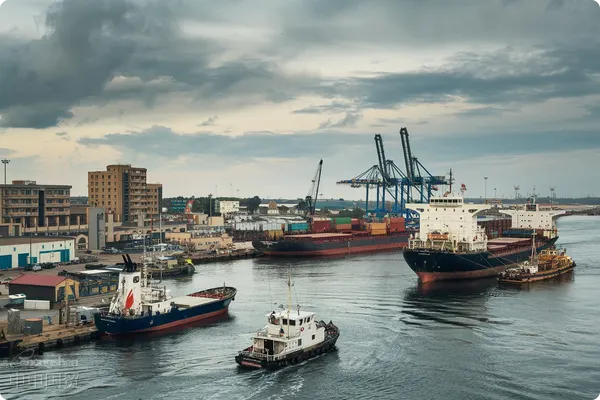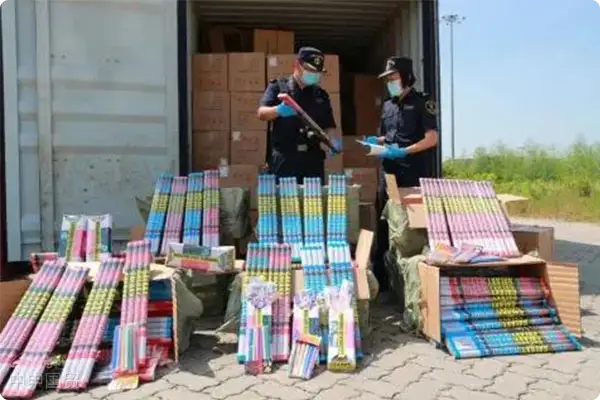- Shanghai Zhongshen International Trade Co., Ltd. - Two decades of trade agency expertise.
- Service Hotline: 139 1787 2118
As commodities with high sensitivity and great risks, the export of chemical reagents involves complex regulations and strict compliance requirements. Ensuring that every link meets the international and destination - country standards is not only for smooth customs clearance, but also for ensuring the safety and stability of the global supply chain. This article will deeply analyze every key step and compliance requirements in the export process of chemical reagents.

The following is a detailed description of the export of chemical reagents, covering every key step and its specific requirements:
I. Product Name and Identification Report
In the process of exporting chemical reagents, ensuring the accuracy of the product name and compliance with international norms is of crucial importance, especially whenExpress DeliveryorAir Transportation. The accuracy of the original product name is not only related to the smooth release of goods during customs clearance, but also affects the final transportation and handling methods of the goods.
(1) Product Name Accuracy:When exporting chemical reagents, the international common names or standard names of chemicals must be used, rather than the internal codes or common names of the company. This approach helps customs and other regulatory agencies accurately identify and manage the goods, avoiding delays or refusals of entry caused by vague or non - standard product names.
(2) Identification Report:According to the nature of the specific product, exporters usually need to provide a product identification report issued by an authoritative institution. This report includes content such as product composition analysis, physical and chemical properties, and risk assessment, helping to prove the legality and safety of the goods. For some countries, especially for highly sensitive chemicals, additional verification or certification reports may be required to ensure that the product complies with the relevant regulations of the importing country.
II. Document Preparation
The preparation of export documents for chemical reagents is a key link to ensure the smooth customs clearance of goods. The accuracy and integrity of the documents directly affect whether the goods can be exported smoothly.
(1) MSDS (Material Safety Data Sheet):The MSDS is a document that describes the physical and chemical properties, hazards, storage requirements, and emergency measures of chemicals, and is one of the indispensable documents in the export process. It not only helps customs and transportation companies understand the characteristics of the product, but also provides important information for dealing with emergencies.
(2) Commercial Invoice and Packing List:The commercial invoice lists in detail information such as the value, quantity, unit price, and total price of the goods, and is an important basis for taxation and customs declaration; the packing list lists the specific contents, dimensions, weight, etc. of each package, ensuring transparency and accuracy in the transportation and handover links.
(3) Trade Contract:The trade contract clarifies the responsibilities and obligations of both the buyer and the seller, including product specifications, delivery date, payment method, etc., and is an important legal basis for handling trade disputes.
(4) Dangerous Goods Packaging Certificate and Dangerous Package Certificate:For chemical reagents classified as dangerous goods, a dangerous goods packaging certificate and a dangerous package certificate must be provided. These documents prove that the packaging meets international transportation standards and can ensure that no accidents will occur due to packaging problems during transportation.
(5) Transport Conditions Appraisal Certificate:Some non - dangerous goods may be required to provide a transport conditions appraisal certificate when exported to prove the safety of the product during transportation. Usually, enterprises can provide their own - made MSDS or non - dangerous guarantee letter as a substitute. However, in specific cases, such as when the destination country has stricter requirements, a transport conditions appraisal certificate issued by an authoritative institution, such as the Shanghai Research Institute of Chemical Industry, may be required.
III. Dangerous Goods Management
The export of dangerous goods requires additional management and compliance with strict international transportation regulations, which not only involves additional document preparation, but also special declaration and operation procedures.
(1) Inspection Results Sheet for the Use of Transport Packaging of Dangerous Goods:This is a necessary document to prove that the packaging materials and methods meet the international dangerous goods transportation standards, ensuring that no leakage, explosion or other dangerous situations will occur due to improper packaging during transportation.
(2) Dangerous Package Certificate:The dangerous package certificate is issued by a national - designated institution, proving that the packaging materials and methods of dangerous goods comply with international regulations. Dangerous goods without a dangerous package certificate may not pass the customs review or be refused transportation.
(3) Commodity Inspection and HS Code:Some chemical reagents may be listed as commodities requiring commodity inspection according to the HS code. Exporters need to ensure that the goods pass the inspection of the national commodity inspection bureau and obtain relevant certificates of conformity before export.
(4) International Transportation Regulations:The export of dangerous goods must comply with the relevant regulations of internationalMaritime Transportationor air transportation, which includes strict management of packaging, labeling, declaration, etc. Exporters also need to declare dangerous goods to the relevant maritime bureau to ensure proper handling and monitoring during sea or air transportation.
IV. Special Handling
Some chemical reagents have special storage and transportation requirements, especially those that need refrigeration or use specific packaging materials.
(1) Refrigeration Treatment:For chemical reagents that need refrigeration, exporters need to pay special attention to the temperature control during storage and transportation. Usually, such products need to be transported with ice packs or dry ice replacement to ensure that the product maintains a stable temperature throughout the transportation process. To ensure safety and effectiveness, it is recommended to handle them through professional cold - chain logistics companies.
(2) Full Container Load (FCL) Export and Special Channels:When conducting FCL exports, if certain reagents are restricted due to the inability to provide commodity inspection certificates, special channels can be considered. For example, first ship to Hong Kong and then export from Hong Kong to the final destination. This method can bypass some of the restrictions encountered in direct exports, but it is still necessary to ensure that all operations comply with international regulations and the requirements of the destination country.

V. Qualification and Compliance
Enterprises exporting chemical reagents must have the corresponding qualifications and compliance to ensure that they can meet the legal requirements of the customs and the destination country during export.
(1) import and exportRights:Enterprises must have legal import and export operation rights and complete customs registration. This qualification is the basis for any form of international trade. Enterprises without legal qualifications will not be able to export through customs.
(2) Pre - approval Documents:For highly sensitive products such as biological reagents, specific pre - approval documents may be required. These documents usually depend on the product category, use, and the specific requirements of the destination country. In some cases, exporters may need to obtain permission from the health department or environmental protection department to ensure the legality of the product in the destination country.
VI. Customs Declaration and Inspection and Quarantine
In theExport ClearanceBeforehand, enterprises must prepare all necessary documents and ensure that they meet the inspection and quarantine requirements of the destination country.
(1) Customs Declaration Documents:Enterprises need to provide complete customs declaration documents, including commercial invoices, packing lists, MSDS (Material Safety Data Sheet), dangerous package certificates, etc. These documents must be accurate; otherwise, the goods may be detained or delayed.
(2) Commodity Inspection Requirements:For some chemical reagents under HS codes that require legal inspection, enterprises need to conduct commodity inspections in advance and obtain relevant certificates of conformity before export. The focus of commodity inspection usually lies in the safety and environmental friendliness of the product to ensure that the exported product meets the standards of the destination country.
(3) Dangerous Goods Transportation Arrangements:Depending on the hazard level of the chemical reagents, exporters may need to use specific transport vehicles, such as dangerous goods transport vehicles, and follow specific logistics processes. Transport that does not comply with these regulations may be stopped by regulatory authorities and may even face legal penalties.
VII. Packaging and Labeling
The packaging and labeling of chemical reagents must comply with international transportation standards and the regulations of the destination country, especially for dangerous goods, where relevant regulations must be strictly adhered to.
(1) International Transportation Standards:The packaging of all chemical reagents should use materials that meet international standards to ensure that there is no leakage, damage, or contamination during transportation. Dangerous goods need to use specific dangerous goods packaging materials, and ensure that clear and accurate dangerous goods labels are affixed to the packaging.
(2) Chinese Label Requirements:For chemical reagents imported into China, if there is no Chinese label on the product packaging, the customs may refuse to release or force a return. The Chinese label should include information such as product name, ingredients, safety warnings, production date, and usage method to ensure the legal sale of the product in the domestic market.
Conclusion
Every link in the export of chemical reagents is crucial. From product name confirmation to packaging labels, any negligence may lead to export obstacles or more serious consequences. By cooperating with professionalExport Representation(such asZhongShen International Trade), enterprises can ensure that all operations meet the latest requirements and thus smoothly export chemical reagents to the global market.
. For more relevant information and content, welcome to followExport of chemical reagents: A comprehensive analysis of regulations and compliant operation proceduresAll content of “, as a one - stop import and export agency service provider, Zhongshen International Trade can provide customized import and export solutions for various industries. If you needforeign tradeFor import and export agency services, please feel free to contact our company for business inquiries. The consultation hotline is 139 - 1787 - 2118.
Related Recommendations
? 2025. All Rights Reserved. 滬ICP備2023007705號-2  PSB Record: Shanghai No.31011502009912
PSB Record: Shanghai No.31011502009912










